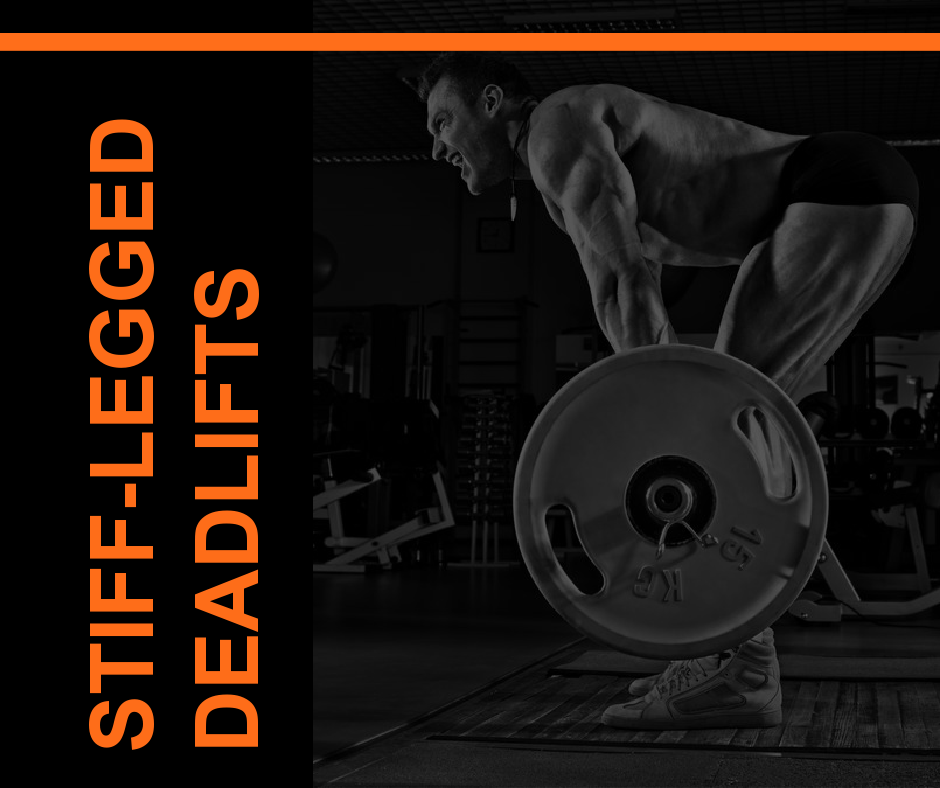Stiff-legged deadlifts, aka straight-leg deadlifts, are a variation of a conventional deadlift in which far less knee flexion is used to pull the weight from off the floor. Contrary to the terminology in its very name, this does not mean the legs should be locked out or totally straight. They are mostly straight, or just straighter than how you properly execute a conventional deadlift.
What Do Stiff-Legged Deadlifts Emphasize?
The primary muscles stressed in this movement are the muscles in the back of your hamstring complex, gluteals, and especially the lower back, the erector spinae in particular. The secondary muscles stressed are your abdominal muscles, shoulders, and the triceps.
Stiff Leg Deadlift Execution
Starting Position
Standing with your shins just touching a weighted bar, place your feet shoulder-width apart and directly under the bar. Reach down for the bar with a flat back by hinging at the hips, and allowing knees to bend softly. Grip the bar in an interlocking grip, one palm up, one palm down. It is very important to keep your back straight.
Movement
- Unlike a conventional deadlift, the knees will not drive forward over the bar, but backward, clearing the way for the bar.
- Lift the bar up off the floor until it is against your upper thighs, arms extended, shoulders stable.
- Keep your back straight and the bar as close as possible to your legs. Take two to three seconds to lower the bar down until you return the bar to the floor.
- Maintain a soft but stable knee flexion throughout the eccentric phase.
- You will feel far more tension in your hamstrings with this straighter-leg execution than a conventional deadlift.
- Return to standing, making sure the hips are fully extended and glutes squeezed.
Training Tips
- Reverse the interlocking grip on every set performed.
- This exercise works your back very hard. You must focus on keeping your back straight throughout the entire exercise.
- The closer your stance is, the greater the range of motion in your hamstrings.
Warning Tips
- You must keep the bar as close to or against your legs when raising the bar up. Failure to do so can result in serious injury to your back.
- This movement should only be attempted after mastering a conventional deadlift.
- Use less weight than your conventional deadlift, and aim for a 12-15 rep range at first. This movement will heavily tax your hamstrings and make them quite sore.
- Be sure to hold a sustained stretch of the hamstrings for at least 60 seconds at the end of your training session.
[sc name=”resistance” ]




